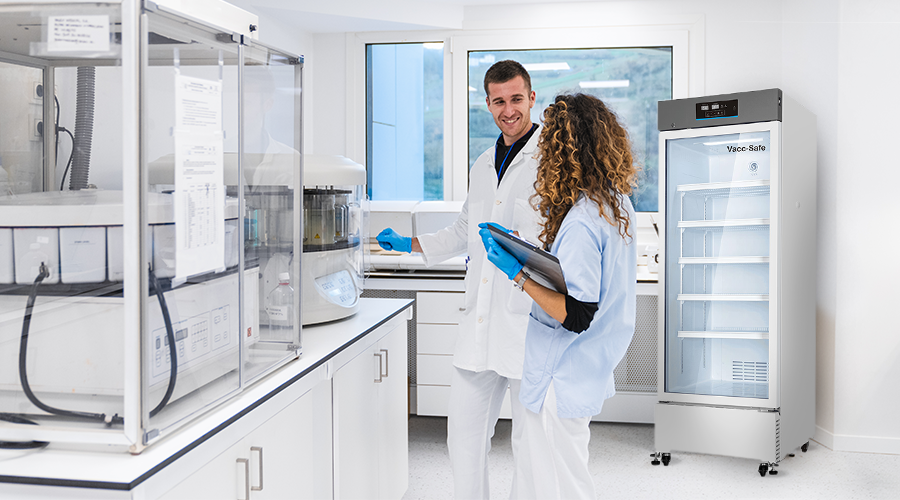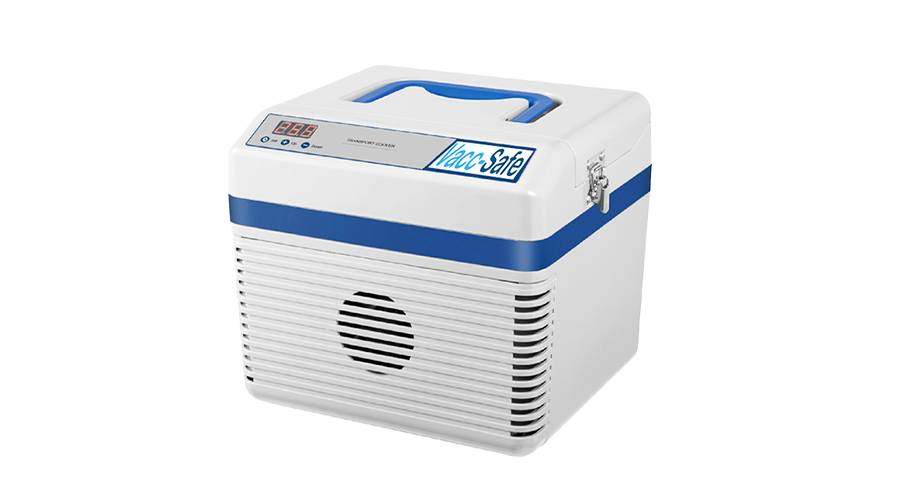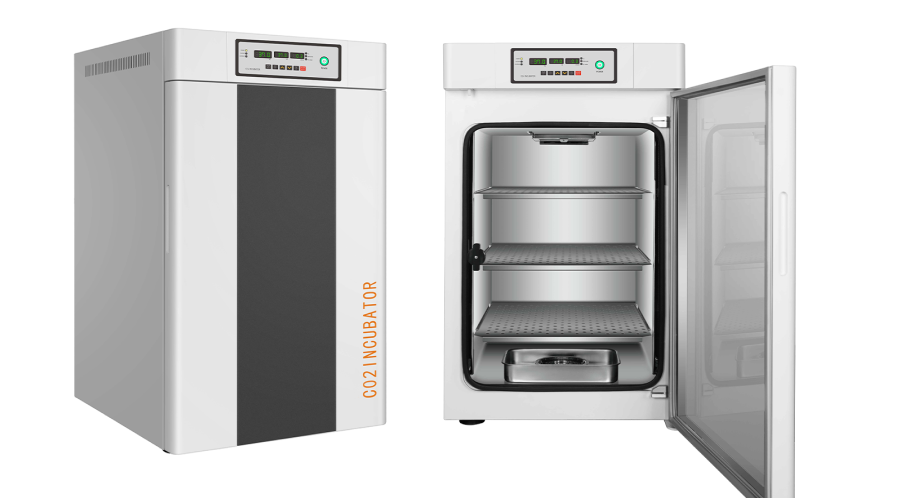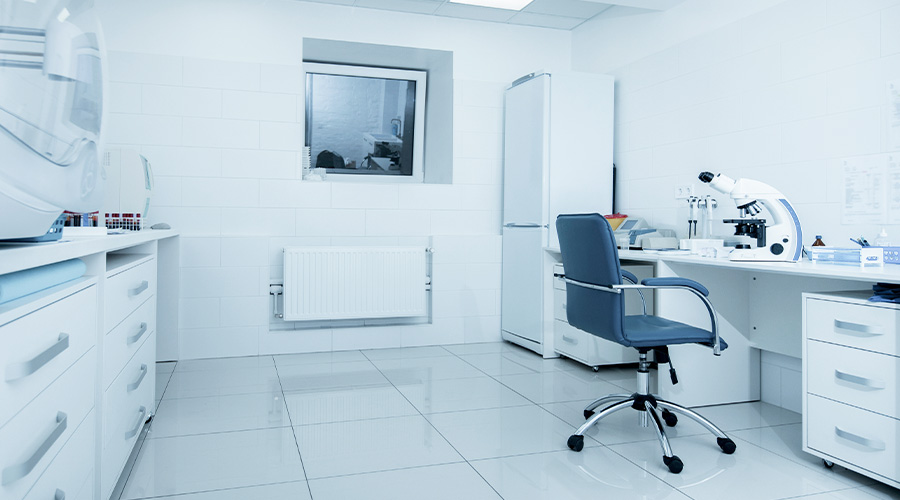The room temperature has an impact on how well a medical refrigerator can maintain a safe temperature. Known as the ambient temperature, this surrounding temperature in the room can cause the fridge to work harder. If the room is too hot or cold it can lead to less temperature stability, more wear and tear and reduced lifespan of the fridge. An incompatible room temperature can have a drastic effect on the contents of medical fridges too. Without the temperature stability they need, temperature sensitive medications and vaccines may become unusable and, at worst, toxic. In this article we will explain everything you need to know about room temperature and refrigerator performance, what happens when the temperature is too cold or too hot, and how to maintain the right room temperature for optimal refrigerator efficiency.
What is Ambient Temperature?
Ambient temperature is the temperature in the surrounding air in a room. It is the temperature you feel around you, and not the temperature of a specific object. In the context of medical fridges, the ambient temperature is the room temperature around the fridge. Medical fridges are designed to be indoors with an ambient temperature no higher than 30°C. The ideal ambient temperature is 20-25°C to ensure the optimum efficiency of the appliance. Without this ambient temperature, the medical fridge may find it hard to maintain its temperature settings of 2 to 8°C, which will impact safe storage of medications.

How Does Ambient Temperature Affect Medical Refrigeration?
Ambient temperature affects refrigeration because it affects how hard the fridge has to work to maintain the desired internal temperature range of 2°C to 8°C necessary for the safe storage of temperature-sensitive medicines, vaccines and biological samples. Refrigerators work on the principle of removing heat from the inside and releasing it outside to maintain a constant cool temperature within. If the ambient temperature is too high, the fridge has to work a lot harder to reduce its internal temperature which may lead to temperature deviations outside the recommended range and compromise stored products. When a medical fridge fails to provide consistent stable temperatures, it is known as a cold chain breach and can result in medications, vaccines and samples becoming less effective or even destroyed.
What is The Ideal Room Temperature for a Medical Refrigerator?
The ideal room temperature for a medical refrigerator is 20-25°C. Medical fridges are designed to maintain a specific temperature range of 2°C to 8°C to safely and effectively store medicines, vaccines and biological samples. The surrounding room temperature has an impact on how efficiently a medical fridge can maintain that internal temperature. Keeping the room temperature to this range of 20-25°C helps to ensure the proper functioning and performance of the medical fridge.
What Happens to a Medical Fridge if the Room is Too Hot or Too Cold?
If the room temperature is too hot or too cold it can have a negative effect on a medical fridge’s ability to maintain the temperature range of 2°C to 8°C required for the safe storage of temperature sensitive medicine, vaccines and biological samples.
A room that is too hot will be detrimental as it forces the fridge to work harder to maintain the right temperature. This can lead to these issues:
- Temperature fluctuations: When a fridge has to work hard to maintain its temperature it can cause temperature fluctuations within the fridge which may have a negative impact on the temperature sensitive goods inside the fridge.
- Reduced lifespan: The extra work on the fridge to regulate its internal temperature can cause wear and tear on the fridge, reducing its lifespan.
- Condensation buildup: When you open the fridge door, the hot air from the room enters the fridge and comes into contact with the colder air which causes condensation to form. Condensation can obstruct the air flow in the fridge causing issues with temperature regulation.
A room that is too cold can also cause problems with a medical fridge as it can put stress on the refrigerator system and make it difficult to maintain the required temperature to keep medicines and vaccines safe. A room that is too cold can cause these issues:
- Inability to maintain temperature: If the room is too cold, the medical fridge may not be able to maintain the required temperature and fall below 2°C which is considered a cold chain breach.
- Damage to equipment: A cold room can damage the medical fridge’s coils and cause water lines to freeze which can cause irreversible damage to the refrigerator’s equipment.
Benefits of Having Ideal Room Temperature for a Medical Refrigerator
Maintaining the ideal room temperature for a medical refrigerator is crucial for the safety and efficacy of temperature sensitive medications, vaccines and biological samples. A consistent ambient temperature of between 20°C and 25°C will help ensure the medical fridge stays within the required internal temperature limits and cause less strain on the fridge’s equipment. The main benefits of having the ideal room temperature for a medical fridge are:
- Ensure medication safety and efficacy: Temperature sensitive medications, vaccines and biological samples rely on specific temperatures to keep them safe and viable. When the ambient room temperature is ideal it helps the medical fridge adhere to these temperature requirements and ensures safety and efficacy.
- Compliance with regulations: There are strict regulations and guidelines that specify the temperature and storage conditions required for vaccines, medicines and biological samples. These goods must be stored in purpose built medical fridges that meet the strict licensing and certification standards that are regularly checked to ensure compliance.
- Reduction of waste: The ideal room temperature will help with the reduction of waste as medications stored outside the required temperature range quickly become unsafe for use and disposable.
How To Keep Room Ideal Room Temperature for a Medical Refrigerator
There are a number of ways to ensure the room temperature is ideal for a medical refrigerator to help it maintain the correct temperature and preserve the integrity of medicines, vaccines and biological samples. These include:
- Keep out of direct sunlight: Make sure the fridge does not overheat by keeping it away from direct sunlight. A medical fridge exposed to direct sunlight could result in the internal temperature rising and a potential cold chain breach. Ensure the medical fridge is in a cooler part of the room if possible to ensure optimum efficiency.
- Keep away from heat: Do not position a medical fridge near a heat source like a heat pump, heater or radiator that could raise the outside temperature of the fridge and cause a similar overheating issue as with direct sunlight exposure.
- Control room temperature: Control the room temperature to ensure it stays at the right temperature range. Use air conditioners to regulate the ambient temperature and prevent overheating.
- Adequate ventilation around the fridge: Ventilation is essential for a medical fridge to perform well and cope with a variety of ambient temperatures. To keep a stable and appropriate interior temperature of a medical fridge, make sure there is a minimum of 10cm space on all sides of the fridge as well as the top to ensure proper ventilation and air flow.
- Regular monitoring: To keep the room the ideal temperature, regular monitoring is crucial. This means using a data logger or thermometer to ensure it stays within the right temperature limits.
- Optimise where the fridge is placed: Consider the importance of where the medical fridge is positioned. Make sure it is placed on a stable surface to prevent uneven temperature distribution.
How to Monitor Ambient Temperature
Ambient temperature in a room with a medical fridge should be checked regularly to ensure no major deviations from the required number. It is recommended to check the ambient temperature twice a day, morning and evening to ensure it remains within the safe range. To monitor ambient temperature follow these guidelines.
- Find a spot in the room that represents overall temperature. This must be one not too close to a heater or air conditioning source.
- Use a calibrated thermometer to ensure the readings are accurate. Most places use digital thermometers but you can also use traditional thermometers.
- Place the thermometer at least 0.70 metres above the floor and away from walls or furniture.
- Record the temperature readings at least every morning and evening either on a sheet or via digital records.
- If significant changes in room temperature occur, address any issues immediately to avoid cold chain breaches and loss of temperature sensitive medications, vaccines or biological samples.

Ambient Temperature When Transporting Vaccines
Vaccines must be stored and transported within the traditional temperature range of 2°C to 8°C . Any deviation from this can impact the efficacy of the vaccines. The ambient temperature during transportation needs to be considered to ensure the cold chain temperature requirements are fulfilled.
When transporting vaccines, follow these rules for safe storage regardless of the ambient temperature.
- Choose the right storage container: Make sure the storage container is large enough to hold all the vaccines with space for ice packs or gel packs if necessary.
- Prepare cooling methods: Choose between using portable medical fridges or coolers with ice packs for transportation.
- Take into account ambient temperature: Consider how the ambient temperature might cause exposure to extreme temperatures when choosing the method of storage.
- Continuously monitor temperature: During transportation, make sure the temperature is constantly monitored particularly if the ambient temperature seems too hot or cold.
- Be prepared for emergency situations: In the event of unexpected delays or other problems during transportation, have a back up plan to ensure safe storage conditions that adhere to the strict temperature requirements.
Room temperature affects a medical refrigerator and it is important to make sure it is kept at an ideal range for the safety and efficacy of temperature sensitive medications, vaccines and biological samples. The ideal room temperature for a medical fridge is between 20°C and 25°C. Should the temperature fall outside that range, a medical refrigerator may not be able to maintain its required internal temperature range. In this article we have explained how room temperature affects a medical refrigerator and how to maintain the right ambient temperature for a medical fridge. For further information contact the experts in medical refrigeration at Vacc-Safe.



